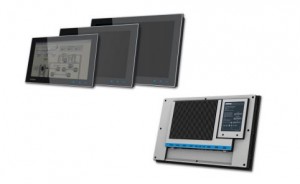I’d been a loyal user of Microsoft Office (Word specifically) for years, but somewhere between one iteration and another I hit the “why-can’t-they-leave-good-enough-alone?” wall. I ended up switching to the OpenOffice counterpart, which has since remained the closest thing I could find to that previous, good-enough version of Word. That is, until the announcement of OpenOffice 4.0 in late July. Here we go again!
The big change in OpenOffice 4.0 was the addition of a new sidebar. The recent proliferation of 16:9 and 16:10 monitors in home and commercial offices was leaving a lot of unfilled display space and software developers, like nature, abhor a vacuum. So they added a sidebar to fill it.
Of course, I jest, at least in part. Yes, major changes to familiar hardware and software can take some getting used to, but widescreen monitors have, at least in the larger PC industry, already become the rule rather than the exception, and the new OpenOffice 4.0 sidebar does make better use of unused screen space. There are often good reasons for the changes we endure.
Advantech, an industry leader in industrial-computing solutions, understands this better than most as evidenced by its recent white paper, Getting the Wider Picture and Benefiting From It. As is the case with all of Advantech’s white papers, I learned more from this one than I expected, and my expectations for it were already pretty high.
For example, a 2008 University of Utah study found that upgrading from an 18-inch 4:3-ratio monitor to a 24-inch widescreen monitor cut time-to-completion of text-related tasks by 52 percent and of spreadsheet tasks by 29 percent. The same study also found that, when compared to dual 20-inch 4:3 monitors, a single 24-inch widescreen yielded 10 percent greater efficiency for text and spreadsheet tasks.
Not only are widescreen monitors already trending in homes and offices, but multi-touch capability is also quickly becoming the rule rather than the exception as sales of Smartphone and tablet computing systems outpace those of traditional desktop PCs and even notebooks.
While I still do most of my professional work at a conventional desktop workstation, my personal computing is done almost exclusively on multi-touch screens via a Smartphone, tablet or touchscreen notebook.
Consequently, I often find myself touching my non-touch workstation screen before remembering to reach instead for the mouse, particularly now that my notebook and workstation both run touch-centric Windows 8. I’m living proof that transitioning back and forth from touch interfaces to mouse- and keyboard-controlled interfaces can have a negative impact on efficiency, which phenomena is also explored more fully in Advantech’s white paper.
When you factor the inherent efficiency of widescreen formats and our increasing familiarity with multi-touch interfaces, the case that Advantech makes for combined implementation of these new capabilities is quite convincing. But don’t take my word for it. Nobody knows HMI better than Advantech, so read its Getting the Wider Picture and Benefiting From It for yourself, here.













